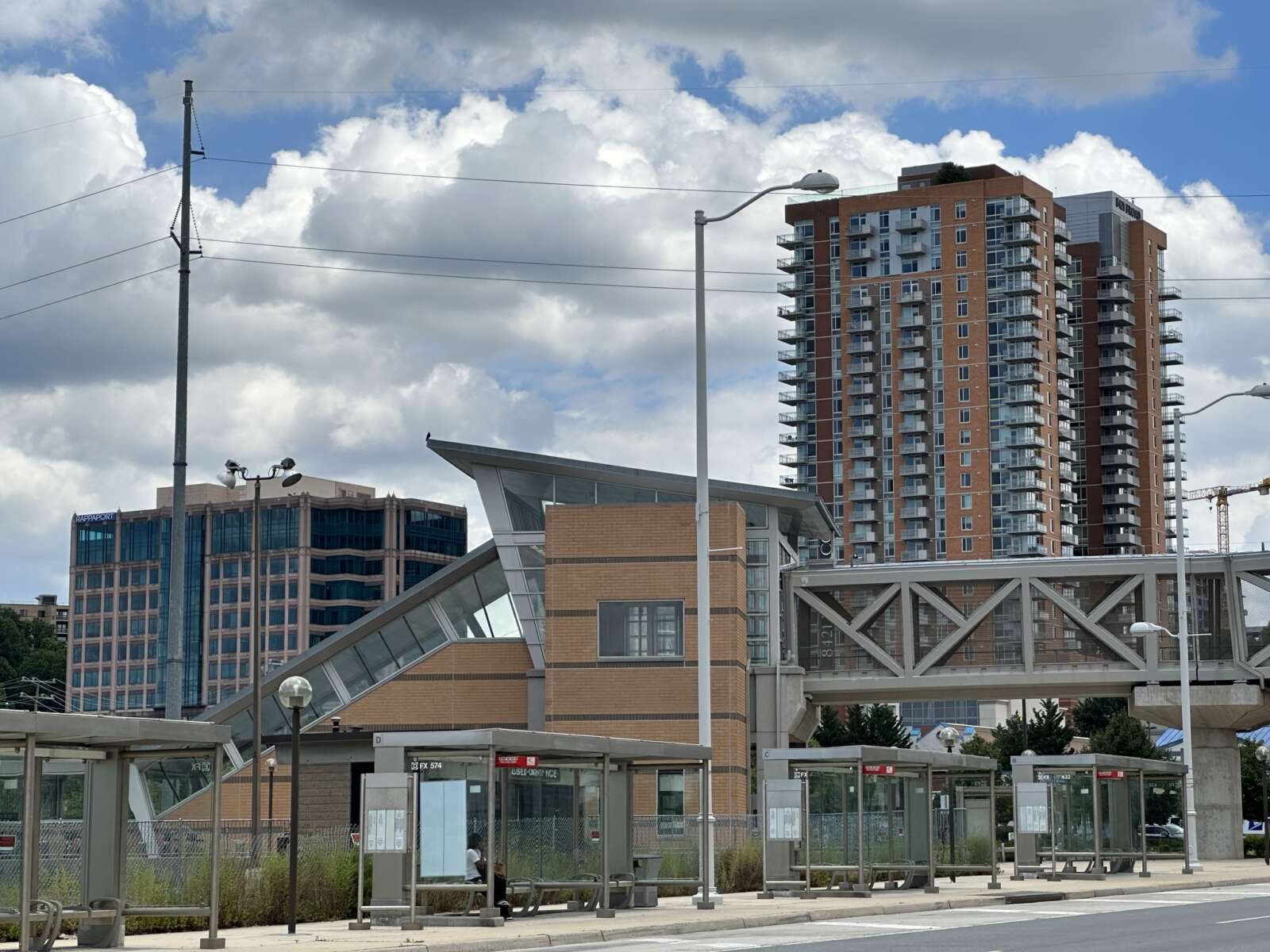
(Updated at 9:25 a.m. on 12/15/2023) The long-running effort to bring bus rapid transit (BRT) service to Route 7 is about to enter a new stage of planning, but for some Fairfax County leaders, the milestone doubles as a reminder of how much more still needs to be done to turn Northern Virginia’s vision into a reality.
The Fairfax County Board of Supervisors approved an agreement at its Dec. 5 meeting to help fund an engineering study and environmental analysis required to implement the bus system, which will serve the corridor from the Spring Hill Metro station in Tysons to the Mark Center in Alexandria.
Though they voted 9-1 in support of the agreement, some board members raised concerns about a lack of clarity on the project timeline from the Northern Virginia Transportation Commission, the regional organization that’s managing the planning process.
“I sit on NVTC, and I don’t have a comfort level yet that they have their hands wrapped around this,” Dranesville District Supervisor John Foust said. “Constantly, I’m asking for schedules — when is this going to happen? — and they never provide them.”
Foust — whose district includes the West Falls Church Metro area at the southern end of the BRT’s future Tysons segment — called NVTC a “great organization” and voted for the agreement, which was only opposed by Springfield District Supervisor Pat Herrity.
But Foust urged county and NVTC staff to provide a thorough breakdown of the long-range plan for the project known as Envision Route 7, including an estimate of when it would be completed “if everything goes as anticipated.”
“That would be very helpful, I think, in evaluating each step as we go forward,” he said.
Board of Supervisors Chairman Jeff McKay concurred, adding that the county doesn’t need specific dates but would find it “helpful” to get a more detailed timeline of key milestones to expect going forward.
He noted that NVTC has already been working on the dedicated Route 7 bus system for years, dating back to a transit study commissioned in 2013.
“The number one question I’ve had about this is, ‘What has been taking so long to get to this point and what does the future look like?'” McKay said. “What we do know is this will be a long-term project, but we need to have a reasonable understanding of what that means in terms of years.”
Fairfax County Department of Transportation acting director Gregg Steverson confirmed the request was “something we can provide to you.”
(Correction: This story initially misidentified Gregg Steverson as the NVTC acting director.) Read More
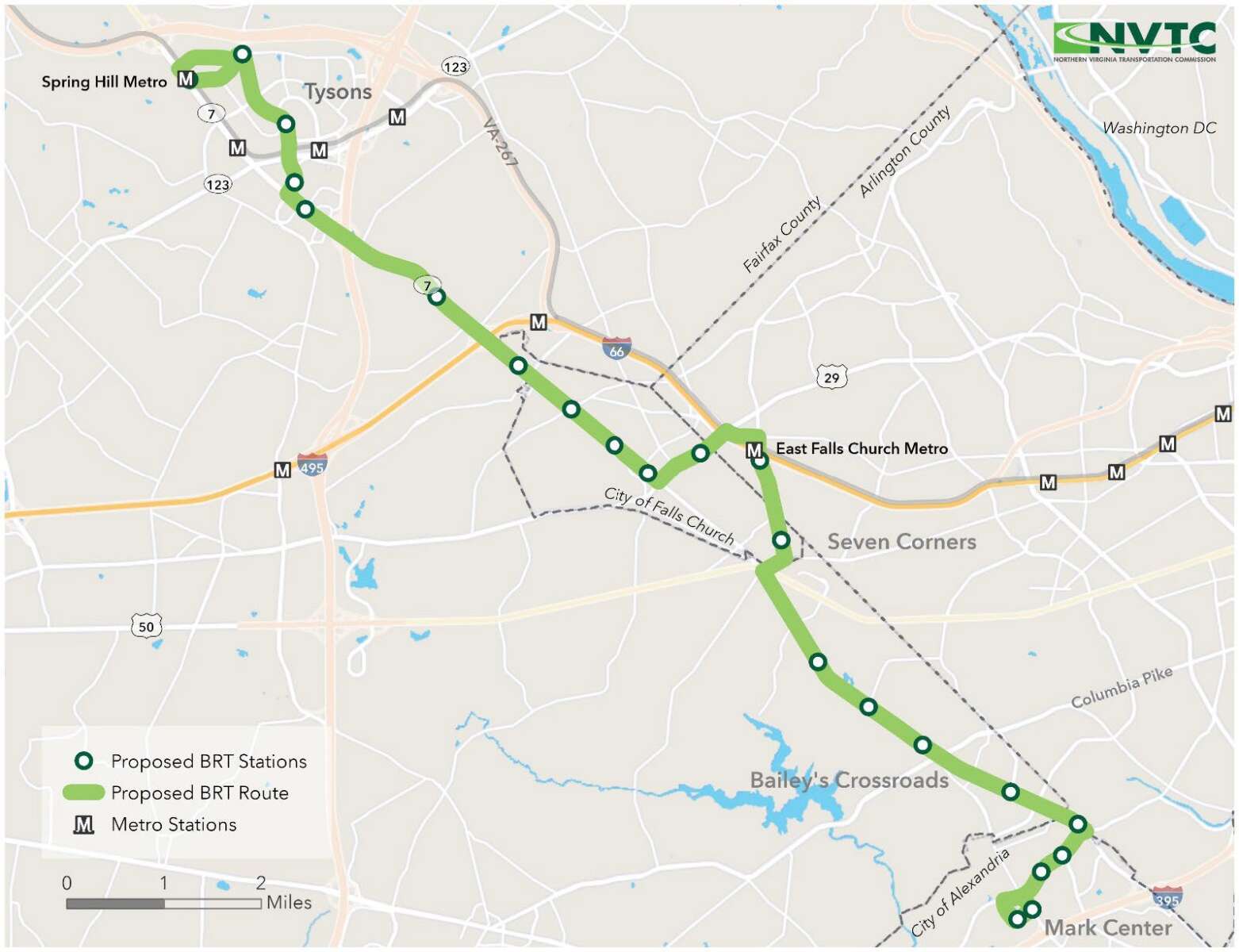
A new bus rapid transit (BRT) route could connect Alexandria and Tysons, and the golden spike in that project could be Falls Church.
The Northern Virginia Transportation Commission (NVTC) is reviewing a study of Envision Route 7’s impact on Falls Church. The study doesn’t make recommendations but provides analysis on how BRT might impact bus and car traffic in Falls Church.
According to the NVTC agenda:
The Commission will be asked to accept the findings of the Envision Route 7 Phase 4-1 Mobility Study, a key element of the fourth phase of planning for a Bus Rapid Transit (BRT) system designed to connect the Mark Center in Alexandria to Tysons via Bailey’s Crossroads, Seven Corners and Falls Church along the Route 7 corridor.
The study included a variety of scenarios for how the BRT route could run through Falls Church, from a “no-build” option to full transit lanes, along with various “hybrids” inbetween.
Unsurprisingly, the scenarios with the higher number of dedicated bus lanes having the largest travel time decrease for buses, though travel times would also increase for cars and other vehicles.
The study also included feedback from public engagement, which determined 60% of respondents agreed improving bus speed and reliability was a high priority, though there was also concern about how the changes might impact bicyclist safety.
The full report is available online.
NVTC is working with Falls Church throughout this fall to develop a preferred scenario, with the project going to various boards and commissions in Falls Church, Fairfax, Alexandria and Arlington this winter.
Image via NVTC/Twitter
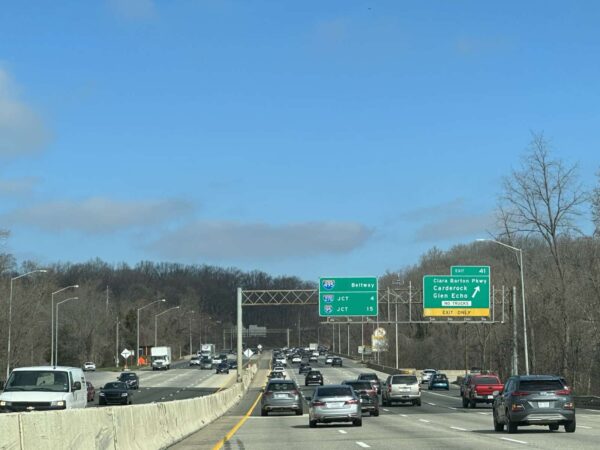
If you find trips on the Capital Beltway into Maryland nightmarish now, imagine what they would be like without any transit options.
That’s the scenario posed by the Northern Virginia Transportation Commission (NVTC) in a new study on the value of the region’s transit network, including Metro, local bus services like Fairfax Connector and the Virginia Railway Express (VRE).
Released today (Thursday), the study found that the American Legion Bridge — the only direct link between Fairfax County and Maryland — would need to carry 24,653 or 8.2% more vehicles per day in 2025 if there was no transit (325,619 vehicles) compared to the projected traffic volume with transit (300,965 vehicles).
The other bridges across the Potomac River would see even bigger differences, led by a 39.2% increase on the Arlington Memorial Bridge.
“These bridges are congested today, and congestion will increase in the future. Without transit, however, the capacity constraint on the bridges would be substantially greater,” the study report says.
The report notes that rush-hour traffic on all of the Potomac crossings is projected to exceed capacity in 2025 regardless of transit availability. The American Legion Bridge would exceed capacity by 3,651 vehicles under the “base” conditions and by 7,379 vehicles under the “no transit” scenario — a 102% difference.
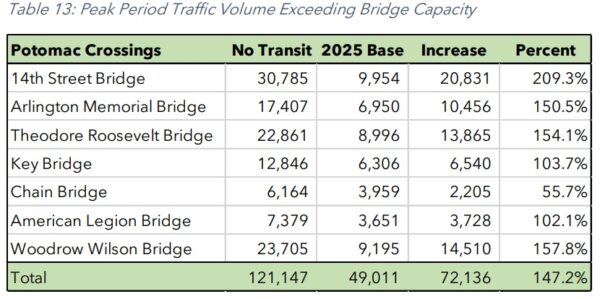
Construction is underway to widen the Capital Beltway (I-495) by adding two toll lanes in each direction from the Dulles Toll Road to just south of the American Legion Bridge. The Virginia Department of Transportation has forecast that the 495 NEXT project will move approximately 2,500 more people per hour in both directions, starting in 2025.
However, Maryland’s plans to replace and expand the bridge remain in limbo following the exit of its private partner. Replacing the American Legion Bridge would allow the Beltway to move 5,400 more people an hour, VDOT has said, but the endeavor will cost an estimated $1 billion.
According to an NVTC spokesperson, the study’s calculations incorporated the 495 NEXT project, but it didn’t include the possibility of future bus service between Tysons and Bethesda, as proposed by both Fairfax Connector and Metro.
“Our study evaluated the difference between what’s currently planned for 2025 and a scenario in which all transit in Northern Virginia is removed,” NVTC said. “That means the proposed future route from Tysons to Bethesda, using the American Legion Bridge, was not included since it won’t be in service by then.” Read More
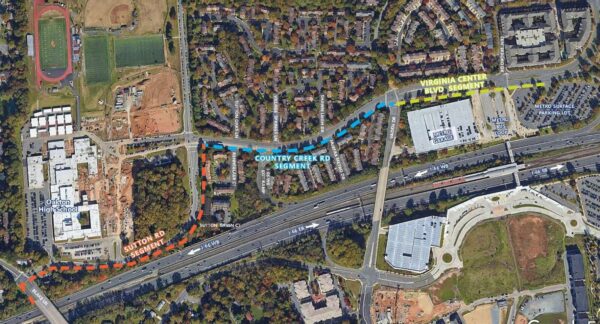
Thanks to some unanticipated financial wiggle room, Fairfax County’s request for funds to build pedestrian facilities near the Vienna Metro station now has support from the Northern Virginia Transportation Commission.
At a meeting on Thursday (June 2), the regional group of elected officials approved the proposed trail as one of seven projects recommended for I-66 Commuter Choice funding, which comes from toll revenue and supports transit and infrastructure improvements in the corridor.
NVTC staff had recommended in April that the commission leave the trail off its list of projects to submit to the state for consideration. The six projects supported at that time included a continuation of Fairfax Connector’s bus service between the Vienna Metro and the Pentagon.
The projects were seeking $12.4 million in funds, and the group estimated that $14.1 million would be available. Fairfax County is requesting $2.2 million to build a nearly 1-mile I-66 Trail segment between the interstate’s Nutley Street interchange and Blake Lane in Oakton.
NVTC says the project could now be fully funded with $1.4 million that has been freed up by “a pending project closeout” on top of $1 million in “remaining revenue that staff had already identified” for the coming fiscal year 2023-2024, which starts July 1 and ends on June 30, 2023.
“The proposed trail would create a safe, attractive route to Metrorail by bicycle or foot for commuters making their way to destinations in the I-66 Inside the Beltway corridor,” NVTC said in its agenda for yesterday’s meeting.
The trail will consist of 5,000-foot-long cycle track and sidewalk along Country Creek Road/Virginia Center Boulevard and a 10-foot-wide, paved shared-use path along Sutton Road.
According to a staff report, the commission received 17 public comments specifically about the trail from an online survey that was open from April 15 to May 16. All but one expressed support for the project.
“This is the project I’m most supportive of. Anything we can do that makes it easier and more convenient to walk or bike we should do,” one respondent said.
With construction on the cycle track and path not expected to start until late 2024, the Virginia Department of Transportation is planning interim amenities for bicyclists and pedestrians that are scheduled to fall into place this year.
The addition of the Vienna Metro trail brings NVTC’s total funding request up to $15.1 million. The other submitted projects include bus service renewals, bus fare reductions in Prince William, a Virginia Railway Express parking garage in Manassas Park, and a new Ballston Metro entrance in Arlington.
The package will now go to the Commonwealth Transportation Board for possible inclusion in its FY 2023-2028 Six-Year Improvement Program, which will be finalized later this month.
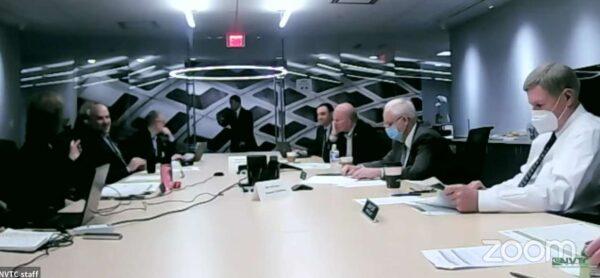
Whenever the planned I-66 Trail is unveiled, it might have some glaring gaps in Fairfax County.
For a second time, the Northern Virginia Transportation Commission has opted not to recommend funding for the county’s planned 1-mile segment of trail from the Vienna Metro station near Nutley Street to Blake Lane in Oakton.
The Fairfax County Department of Transportation had requested $2.2 million in funding for the project, which would add a 5,000-foot-long cycle track along Country Creek Road/Virginia Center Boulevard and a 10-foot-wide paved path along Sutton Road.
It was one of four projects that the county submitted for consideration in the next round of the I-66 Commuter Choice program, which allocates I-66 toll revenue to transportation projects throughout the corridor.
NVTC staff recommended moving forward with six of nine projects proposed for fiscal years 2023-2024, which runs from July 1, 2022, to June 30, 2023. The regional group’s program advisory committee met yesterday (Thursday) to discuss the rankings prior to opening a public comment period today (Friday).
With a score of 69 out of 100 points, the only Fairfax County project to make the cut was a request for $1.2 million to support two more years of bus service between the Vienna Metro station and Pentagon. The funding will cover 10 morning and 10 evening peak direction, express trips.
The Vienna Metro trail project received 57 points based on technical merit, cost-effectiveness, and other factors. The county had previously submitted the project for Commuter Choice funding in 2019.
NVTC staff also did not recommend funding for an I-66 Trail segment along Post Forest Drive in Fairfax to the future Monument Drive commuter parking garage, or to enhance bus service from the Stringfellow Road Park-and-Ride in Centreville to the Pentagon.
Those projects had price tags of nearly $4.4 million and nearly $2.9 million, respectively, and received scores of 40 and 47.
How efficiently a project can move people is the leading factor when calculating scores, said Ben Owen, NVTC’s Commuter Choice senior program manager. The top six projects would involve nearly $12.4 million in funds, with a conservative estimate of $14.1 million expected to be available for this year.
The recommended projects are projected to reduce vehicle usage in the region, cut greenhouse gas emissions by 84%, and save commuters 83,000 hours of delay and $2 million annually in fuel costs, according to a presentation to the committee.
People can weigh in on all of the projects, regardless of their technical score, in a survey that’s available in English and Spanish through May 16.
The Northern Virginia Transportation Commission and Commonwealth Transportation Board are slated to approve the project list in June and begin funding in July.
Photo via NVTC/YouTube

